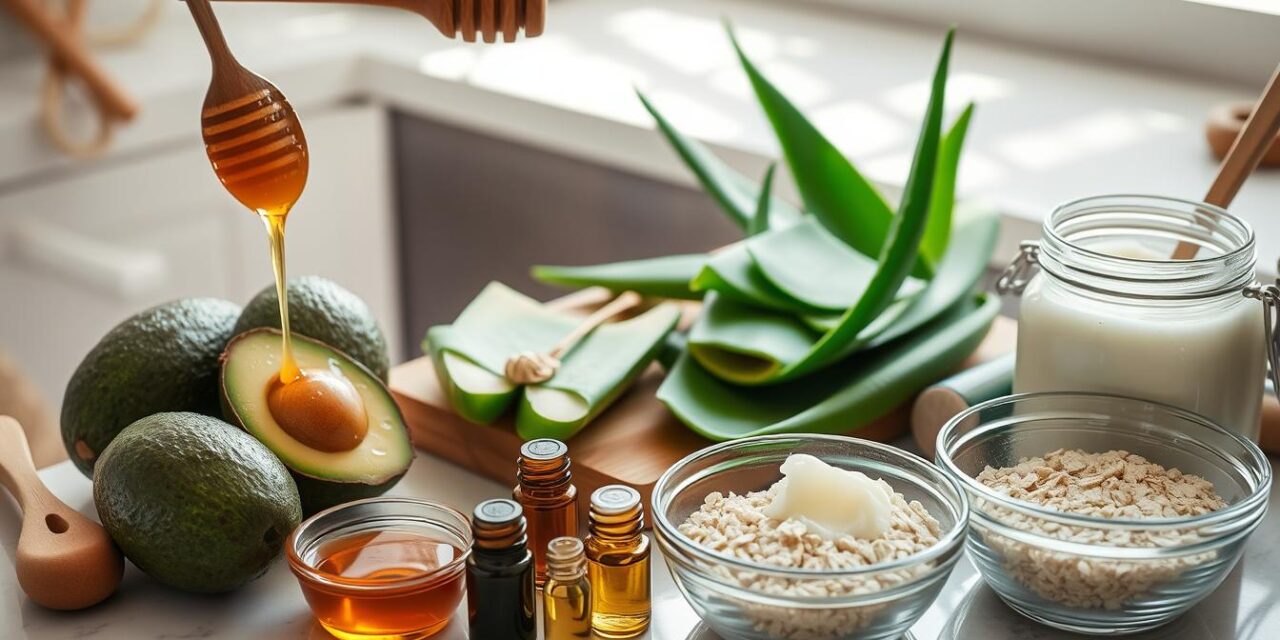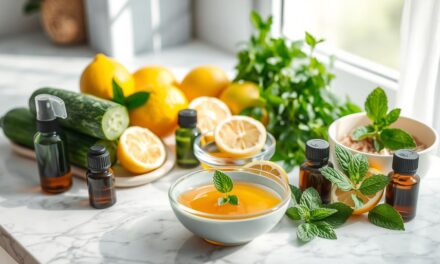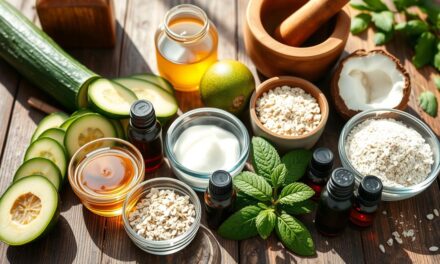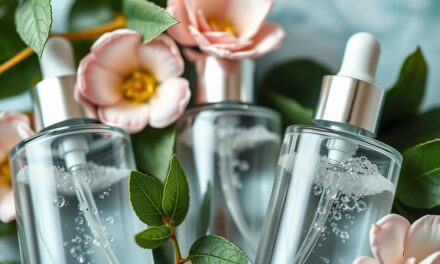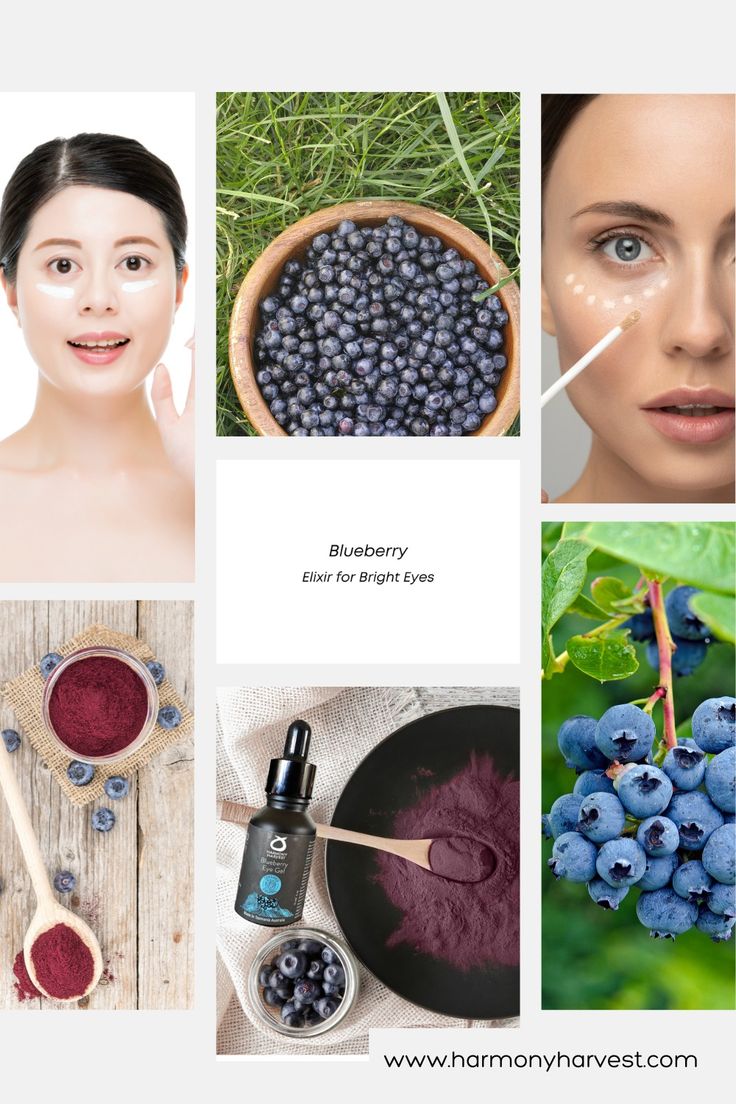Did you know over 75% of Australians are unhappy with their skincare? You don’t have to spend a lot to get healthy, glowing skin. The answer might be in your kitchen. This article shows how to use natural ingredients to make a skincare routine that fits your skin perfectly.
Key Takeaways
- Discover the science-backed benefits of using natural ingredients for your skin
- Learn how to create a customised skincare routine with affordable kitchen staples
- Explore recipes for homemade cleansers, toners, exfoliants, and moisturisers
- Understand safety precautions and ingredient testing to ensure skin-friendly formulas
- Adjust your kitchen-based skincare routine for different seasons and climate conditions
Understanding the Benefits of Natural Kitchen Ingredients for Skin
The ingredients you choose for your skincare are crucial. Commercial products often use synthetic additives. But, natural kitchen ingredients offer many benefits for your skin. They are backed by science and are cost-effective, improving your skin health.
Scientific Evidence Behind Natural Ingredients
Studies have proven the effectiveness of kitchen ingredients for skin care. Foods like avocado, honey, and olive oil are full of antioxidants and healthy fats. They deeply hydrate and protect the skin. Also, organic skincare products from natural sources, such as aloe vera and green tea, have anti-inflammatory properties.
Advantages Over Commercial Products
Natural kitchen ingredients have several benefits over commercial products. They have fewer synthetic additives, reducing irritation risks. They also support a sustainable beauty routine, appealing to eco-conscious consumers.
Cost-Effectiveness of Kitchen Ingredients
Using kitchen ingredients in your skincare routine is budget-friendly. Many are found in your pantry, saving money on skin nourishing foods and organic skincare products. This makes it affordable to maintain a comprehensive skincare routine.
“Embracing the power of natural kitchen ingredients can transform your skin without compromising your wallet or the environment.”
Essential Kitchen Ingredients for Different Skin Types
Looking for a skincare routine? Your kitchen might have the answer. Many common ingredients can do wonders for your skin, no matter your type.
For oily skin, honey and green tea are great. They help control oil and shrink pores. Dry skin benefits from avocado and coconut oil, which moisturise deeply. If you have combination skin, try yoghurt for soothing and oatmeal for gentle exfoliation.
Those with sensitive skin need gentle care. Aloe vera and chamomile are calming and anti-inflammatory. By choosing the right kitchen ingredients, you can make a skincare routine that’s natural and effective.
| Skin Type | Recommended Kitchen Ingredients | Skin Benefits |
|---|---|---|
| Oily | Honey, Green Tea | Regulates sebum production, minimizes pores |
| Dry | Avocado, Coconut Oil | Deeply hydrates and nourishes the skin |
| Combination | Yoghurt, Oatmeal | Soothes and gently exfoliates the skin |
| Sensitive | Aloe Vera, Chamomile | Calms and reduces inflammation |
Using these kitchen ingredients, you can make a skincare routine that’s perfect for you. It’s natural, effective, and won’t break the bank.
How to Create a Skincare Routine with Kitchen Ingredients
Using natural kitchen ingredients for skincare is easy and budget-friendly. You can make a routine that meets your skin’s specific needs. Here’s a simple guide to start your kitchen skincare journey.
Morning Routine Steps
- Start with a gentle face wash made from honey or oatmeal. It cleanses without drying out your skin.
- Next, use a toner like rosewater or green tea. It balances your skin’s pH and gets it ready for more steps.
- Apply a moisturiser with avocado, coconut oil, or aloe vera. It keeps your skin hydrated and protects it.
- Finally, use a natural sunscreen with zinc oxide. It protects your skin from UV rays.
Evening Routine Steps
- At night, use a gentle oil or milk-based cleanser. It removes dirt, makeup, and impurities from the day.
- Then, mist your face with a toner from cucumber or chamomile. It soothes and refreshes your skin.
- Finish with a moisturiser rich in plants like shea butter or rosehip oil. It deeply nourishes your skin.
Weekly Treatment Schedule
Add these treatments to your routine once or twice a week for extra benefits:
- Exfoliate with a homemade scrub from brown sugar, oats, or baking soda. It removes dead skin cells.
- Use a face mask with avocado, honey, or yoghurt. It deeply hydrates and nourishes your skin.
Consistency and flexibility are key in kitchen skincare. Try different ingredients to find what works best for you. With creativity and the right kitchen items, you can get glowing, healthy skin.
Natural Cleansers from Your Pantry
Forget the expensive face washes at your local pharmacy. Your kitchen holds the secret to radiant, healthy skin. Discover natural, homemade cleansers that gently remove dirt and impurities without drying out your skin.
Explore the magic of DIY beauty and homemade face masks. These simple kitchen-based solutions are effective and gentle:
- Oil-Based Cleansers: Use coconut oil, olive oil, or avocado oil as luxurious cleansers. Massage the oil on damp skin, then rinse with warm water for a hydrated look.
- Grain-Based Scrubs: Oats, cornmeal, or brown rice flour make great exfoliating scrubs. Mix with honey or yogurt for a soothing, smooth experience.
- Foaming Cleansers: Create a creamy cleanser with castile soap, honey, and essential oils. It’s gentle and leaves your skin feeling clean without dryness.
Adding these natural cleansers to your daily routine is easy. It helps you achieve a glowing complexion and reduces waste. Let your pantry guide you to DIY beauty happiness.
DIY Facial Toners and Mists Using Kitchen Items
Australians are now using their kitchen items for natural skincare. They make homemade facial toners and mists. These are gentle and cheaper than store-bought ones.
Herbal Infusions for Toning
Herbs like green tea, chamomile, and rose petals are great for your skin. They calm inflammation and tighten pores. Just steep the herbs in hot water, cool it, and put it in a spray bottle.
Fruit-Based Toner Recipes
Australian kitchens are full of beauty hacks. Fruit-based toners balance and brighten your skin. Mix apple cider vinegar with citrus fruits, cucumber, and aloe vera for a soothing mist.
Storage and Shelf Life Tips
Proper storage is crucial for your homemade toners. Keep them in clean, airtight containers in the fridge. Fruit and herb toners last up to a week. Herbal infusions can last two weeks. Always test a small area before using.
Using your kitchen for skincare is smart and budget-friendly. With creativity and basic ingredients, you can make toners and mists for your skin’s needs.
Kitchen Ingredients for Natural Exfoliation
Getting a glowing skin is simpler than you think. It starts with natural exfoliation. Using kitchen ingredients in your skincare routine can help with dullness, uneven texture, and clogged pores. This makes your routine more effective and nourishing.
Sugar is a gentle exfoliant found in your pantry. Mix it with olive or coconut oil to gently remove dead skin cells. This reveals the fresh skin beneath. Oatmeal is also great for exfoliating and soothing irritated skin.
Fruits like papaya and pineapple have enzymes that break down dead skin cells. These natural fruit acids help achieve a smoother skin texture. Try making DIY enzyme masks or scrubs to target specific skin issues and get a radiant glow.
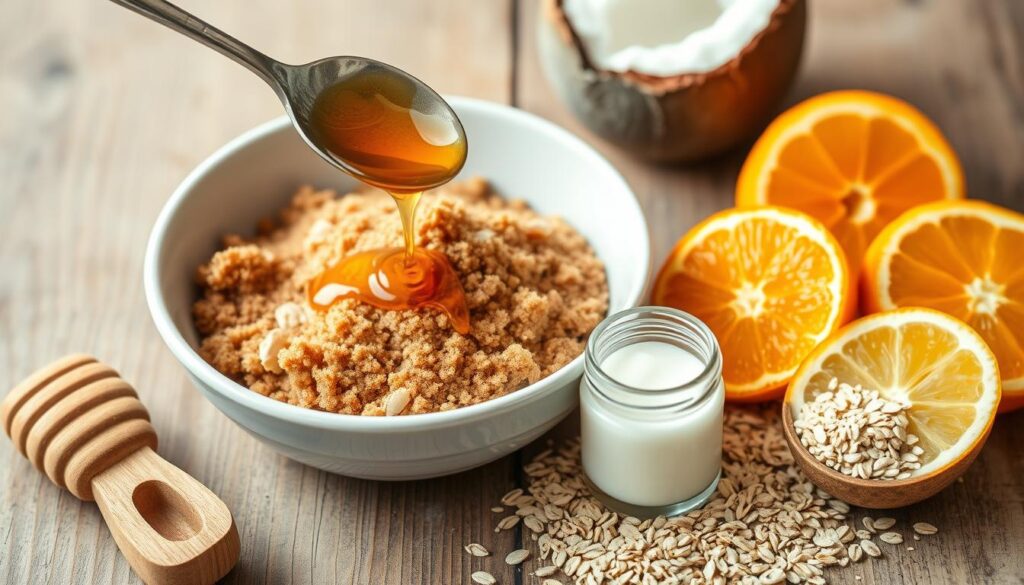
Regular exfoliation is key in any effective skincare routine. It unclogs pores, improves texture, and helps the skin absorb nourishment better. Using these kitchen-based exfoliants can address skin concerns and give you a luminous, rejuvenated look without harsh products.
Moisturising Solutions from Your Kitchen
Your kitchen is full of natural ways to keep your skin moist and healthy. Discover how skin nourishing foods can help. You can even make your own organic skincare products at home.
Oil-Based Moisturisers
Oils are great for keeping your skin moist and protected. Avocado oil is packed with vitamins A, D, and E, perfect for dry or mature skin. Jojoba oil, on the other hand, is like your skin’s natural oil, good for all skin types.
Natural Humectants
Humectants draw in and hold moisture, keeping your skin soft and plump. Honey is a natural humectant that fights bacteria and reduces inflammation, great for blemishes. Aloe vera gel is also a humectant that soothes and hydrates, refreshing your skin.
Application Techniques
To use your kitchen moisturisers well, apply them right. Massage the oil or humectant into your skin, focusing on dry areas like cheeks and forehead. Apply to damp skin for better absorption and massage to boost circulation.
| Ingredient | Skin Benefits | Best For |
|---|---|---|
| Avocado Oil | Rich in vitamins A, D, and E, nourishing and hydrating | Dry or mature skin |
| Jojoba Oil | Mimics the skin’s natural sebum, suitable for all skin types | Oily, acne-prone, or normal skin |
| Honey | Natural humectant with antibacterial and anti-inflammatory properties | Blemish-prone skin |
| Aloe Vera Gel | Hydrating humectant with soothing and refreshing properties | All skin types |
Using skin nourishing foods and organic skincare products from your kitchen can be affordable and natural. Try these moisturising solutions to find what works best for your skin.
Treatment Masks for Common Skin Concerns
Homemade face masks can change your skincare game. They use natural ingredients from your kitchen to nourish and revitalize your skin. They’re great for acne, dryness, or ageing signs, depending on what you need.
For acne, try a mask with yoghurt, honey, and cinnamon. Yoghurt cleans pores, honey fights bacteria, and cinnamon kills germs. It’s a strong combo against acne.
- Yoghurt (1/2 cup)
- Honey (1 tablespoon)
- Cinnamon (1/2 teaspoon)
For dry skin, mash avocado and mix with honey and olive oil. Avocado moisturizes, honey locks in moisture, and olive oil adds extra hydration. It’s a deep moisturizer.
- Avocado (1/2 medium)
- Honey (1 tablespoon)
- Olive oil (2-3 drops)
For ageing skin, blend bananas, oats, and cinnamon. Bananas fight free radicals, oats exfoliate, and cinnamon boosts blood flow. It makes your skin look younger.
| Ingredient | Quantity |
|---|---|
| Banana | 1 medium |
| Oats | 2 tablespoons |
| Cinnamon | 1/2 teaspoon |
Try these homemade face masks to tackle your skin concerns. With simple ingredients, you can care for your skin at home. It’s easy and effective.
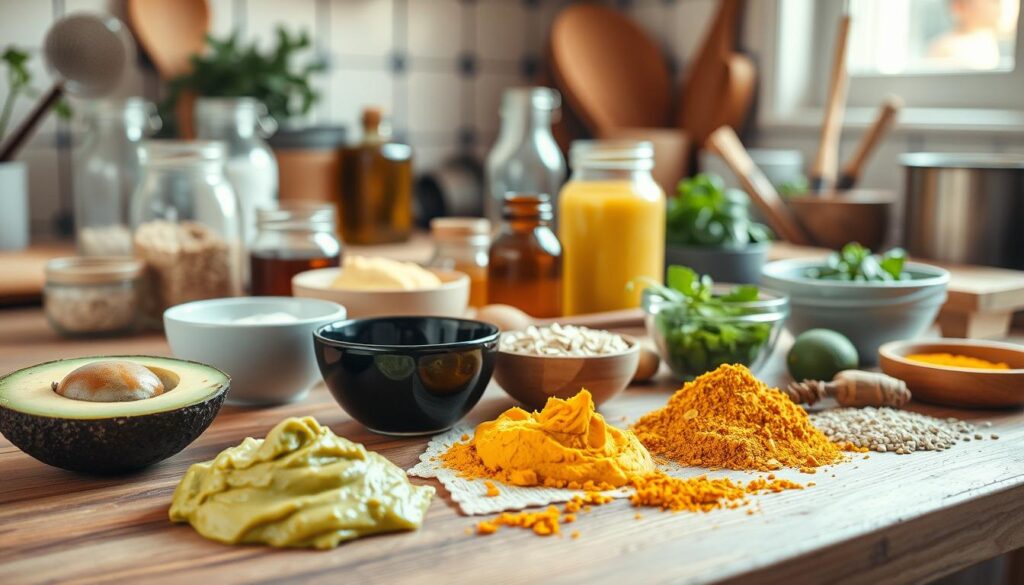
Safety Precautions and Ingredient Testing
When making your own natural skincare products, safety is key. Always test new ingredients before adding them to your effective skincare routine. This ensures you avoid any harmful effects.
Patch Testing Guidelines
Start by doing a patch test on a small area of skin. Try it on your inner forearm first. Watch for any bad reactions for 24-48 hours. This step helps prevent skin issues.
Ingredients to Avoid
- Citrus fruits: These can cause photosensitivity and increase sun damage.
- Essential oils: While natural, they can be potent and irritate sensitive skin types.
- Baking soda: This alkaline ingredient can disrupt the skin’s pH balance.
Storage Requirements
Storing your homemade natural skincare products right is important. Use clean, airtight containers and keep them in a cool, dark spot. Don’t let them get direct sunlight or extreme temperatures, as this can spoil them.
| Storage Condition | Recommended Shelf Life |
|---|---|
| Refrigerator | 2-3 weeks |
| Room Temperature | 1-2 weeks |
By sticking to these safety tips and testing methods, you can safely enjoy the perks of natural skincare.
Seasonal Adjustments for Your Kitchen Skincare Routine
As the seasons change, our skin’s needs change too. Making simple swaps in your kitchen skincare routine can keep your skin looking great all year. Find out how easy it is to adjust your routine for the best skin health, no matter the weather.
Winter Wonders
In winter, our skin gets dry. Use avocado or coconut oils in your skincare to keep it moist. Add honey or glycerin to lock in moisture. Try a oatmeal or yogurt mask once a week to soothe dry skin.
Spring Cleaning
Spring brings longer days and a need for a skin refresh. Use lemon or apple cider vinegar toners to balance your skin’s oil. Exfoliate with baking soda or coffee grounds for a brighter look. Introduce these new ingredients slowly to avoid skin irritation.
Summer Saviours
In summer, we need to control shine and protect our skin from the sun. Use green tea, cucumber, and aloe vera for these benefits. Choose light, oil-free moisturisers and a mint or citrus-infused mist for a refreshing touch.
Autumn Adjustments
In autumn, our skin needs extra care. Add honey, avocado, and pumpkin to your routine. A turmeric or cinnamon mask once a week can help with sun damage.
By adjusting your kitchen skincare routine with the seasons, you can keep your skin healthy and radiant all year. Use nature’s gifts to enhance your beauty routine.
Conclusion
Creating a natural skincare routine with kitchen items is rewarding and saves money. You can use common kitchen ingredients to care for your skin without harsh chemicals. This approach has many benefits, like avoiding synthetic chemicals and making your routine fit your skin’s needs.
Your pantry is full of ingredients for skincare. You can make your own cleansers, toners, exfoliants, and moisturisers. Trying out different recipes and methods can make your skin look great and feel healthy.
Keep in mind your skin’s unique needs as you go along. Do patch tests, stay away from things that might irritate your skin, and change your routine if needed. With a bit of creativity and a desire to learn, you can make a natural skincare plan that’s just right for you.
